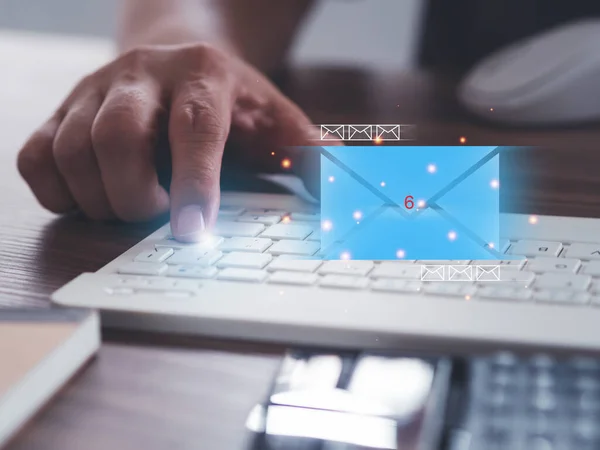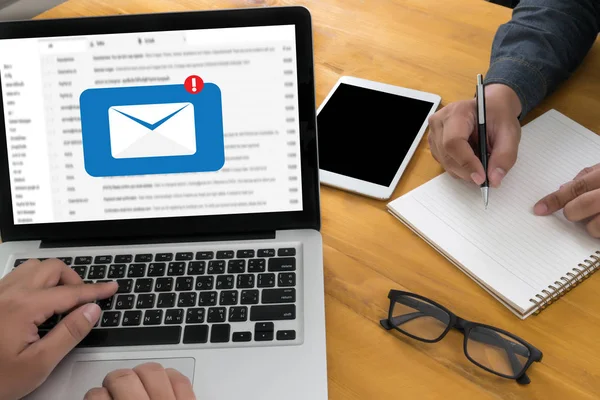Unlocking The Secrets: Decoding DMARC Reports For Email Security
In the complex landscape of cybersecurity, where email remains a primary target for malicious actors, the implementation of robust defenses is paramount. One such critical defense mechanism is DMARC, an acronym for Domain-based Message Authentication, Reporting, and Conformance. While DMARC is known for its ability to authenticate emails and thwart phishing attempts, the true power lies in the insights provided by decoding DMARC reports. This article delves into the world of DMARC reports, unraveling the secrets they hold and exploring how organizations can leverage this information to fortify their email security posture.
As organizations increasingly rely on email communication for critical exchanges, the need to safeguard against unauthorized access and phishing attacks becomes more pressing. DMARC, with its multifaceted approach encompassing SPF and DKIM, not only authenticates emails but also generates comprehensive reports on email authentication activities. Unlocking the secrets within these DMARC reports is akin to possessing a map to the vulnerabilities and strengths of an organization's email security infrastructure. This article aims to shed light on the decoding process, revealing how organizations can harness the wealth of information embedded in DMARC reports to identify, analyze, and ultimately enhance their email security defenses.
Understanding DMARC: A Brief Overview
What is DMARC?
DMARC is an email authentication protocol that builds on two existing protocols, Sender Policy Framework (SPF) and DomainKeys Identified Mail (DKIM). Its primary objective is to prevent email spoofing and phishing attacks by allowing senders to authenticate their emails and specify what actions should be taken if authentication fails.

How Does DMARC Work?
DMARC operates by enabling domain owners to publish policies in their Domain Name System (DNS) records. These policies instruct email receivers on how to handle messages that fail authentication checks. DMARC also provides a mechanism for reporting back to senders about the disposition of their emails, offering valuable insights into potential security threats.
The Three Key Components of DMARC
DMARC operates on three fundamental components:
Authentication
Authentication is the cornerstone of DMARC. It ensures that the sender's identity is verified through SPF and DKIM. If an email passes either of these authentication methods, it is considered authenticated. DMARC enables the sender to specify the alignment requirements, ensuring that the domain in the "From" address aligns with either the SPF or DKIM domain, or both.
Reporting
DMARC introduces a robust reporting mechanism that enables the collection and analysis of data related to email authentication. DMARC reports, sent by email receivers to the specified email address in the DMARC policy, provide valuable insights into who is sending emails on behalf of a domain, which emails pass or fail authentication, and any potential malicious activity.
Policy
The policy component of DMARC allows domain owners to specify how unauthenticated emails should be handled by email receivers. Domain owners can choose between three policy actions: "none," "quarantine," or "reject." The "none" policy allows the collection of data without taking any action, while "quarantine" instructs email receivers to treat unauthenticated emails with caution, and "reject" directs receivers to reject unauthenticated emails outright.
Utilizing DMARC Reports for Enhanced Security
- Unauthorized Sender Identification: DMARC reports help identify and block unauthorized senders attempting to impersonate a domain, preventing email spoofing and phishing attacks.
- Optimizing Authentication Mechanisms: Organizations can use DMARC data to fine-tune SPF and DKIM configurations, ensuring optimal performance and reducing the risk of false positives.
- Monitoring Email Deliverability: DMARC reports provide insights into how email receivers handle authenticated and unauthenticated emails, allowing organizations to enhance email deliverability and prevent legitimate emails from being misclassified.
- Incident Response and Investigation: In the event of a security incident, forensic DMARC reports become instrumental for tracing the origin of malicious emails, understanding attack vectors, and strengthening defenses.
- Proactive Threat Mitigation: Regularly reviewing DMARC reports enables proactive identification and mitigation of potential threats, safeguarding against evolving cyber risks.
- Collaboration with Email Receivers: Establishing a collaborative relationship with email receivers, by sharing DMARC reports, facilitates prompt issue resolution and strengthens overall email security.

Best Practices for Decoding DMARC Reports
To maximize the benefits of DMARC reports, organizations should adhere to best practices that enhance the effectiveness of their email security measures. Read more details about hosted email server here.
Regularly Review DMARC Reports
Regularly reviewing DMARC reports is essential for robust email security. These reports offer quick insights into authentication health, helping identify and address issues promptly. Proactive analysis ensures a secure and trustworthy email environment by swiftly mitigating potential threats and optimizing authentication mechanisms.
Collaborate with Email Receivers
Collaborating with email receivers is vital for effective email security. Sharing DMARC reports fosters a proactive partnership, enabling swift issue resolution and enhancing overall email protection. This collaborative approach ensures a united front against potential threats, strengthening the security posture of the entire email ecosystem.
Implement DMARC Incrementally
Implementing DMARC incrementally is a prudent strategy for email security. Starting with a "none" policy and gradually advancing to more stringent settings minimizes disruptions to legitimate email flows. This phased approach allows organizations to build confidence in the authentication process while steadily fortifying defenses against potential threats.
Looking Ahead: The Future of DMARC and Email Security
Technological Advancements
As technology continues to advance, so will the capabilities of email security protocols like DMARC. Future developments may include enhanced automation, machine learning, and artificial intelligence to further fortify email security and streamline the decoding of DMARC reports.
Global Collaboration
Given the interconnected nature of the internet, global collaboration is essential to combatting email-based threats effectively. The future of DMARC may see increased standardization and collaboration frameworks to facilitate seamless information sharing and threat mitigation on a global scale.
